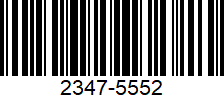Indexing Metadata
| 1 | Title of the Article | A Review of the Literature on Immersive Virtual Reality in Education: Current State and Future Prospects |
| 2 | Author's name | Surbhi Sharma: Assistant Professor, Department of Computer Applications, RIMT University, Mandi Gobindgarh, Punjab, India |
| 3 | Author's name | |
| 4 | Subject | Management |
| 5 | Keyword(s) | Education, Educational Technology, Immersion, Virtual Reality. |
| 6 | Abstract | That's because the term "Virtual Reality" (VR) was being coined in mid-1950s, it really has evolved in numerous aspects, getting increasingly similar to the natural environment. Virtual reality is classified into two kinds: non-immersive & comprehensive. The earlier is a computer-based ecosystem which may well simulate places in real or envisioned realms, while the subsequent pushes the notion a stage forward by giving the sense of having ability to be present inside a non-physical realm. Although non-immersive VR could well be driven by a standard PC, immersion VR is still in its early stages as the required technology gets relatively consumer-friendly and economical. Utilizing gear including a headgear with eyewear was tough in the old days, however modern devices constantly getting developed to increase usefulness for the consumer. VR technology is based on three basic components: immersing, interactivity, and user involvement with the surroundings and narrative, has enormous potential in teaching because it encourages as well as fascinates pupils. Because of the high pricing of the gadgets plus their modest utility, the utilization of interactive VR in kids software has indeed been confined thus far. Immersive-VR is now available in a range of academic contexts because to latest techniques such as the commercialized Oculus Rif". The presented paper has undertaken a survey of several scientific literature on the advantages and prospects of adopting online VR in e-learning during the last twenty months. It highlights how vr technology in overall, particularly immersive VR in specific, has primarily been used for grownup teaching in special situations or for undergrads. The discussion then shifts to the possible pluses and minuses of employing elearning, with special emphasis on distinct target categories such as youngsters and those with intellectual disabilities. It concludes by offering techniques for testing these ideas. |
| 7 | Publisher | Innovative Research Publication |
| 8 | Journal Name; vol., no. | International Journal of Innovative Research in Computer Science & Technology (IJIRCST); Volume-10 Issue-2 |
| 9 | Publication Date | March 2022 |
| 10 | Type | Peer-reviewed Article |
| 11 | Format | |
| 12 | Uniform Resource Identifier | https://ijircst.org/view_abstract.php?title=A-Review-of-the-Literature-on-Immersive-Virtual-Reality-in-Education:-Current-State-and-Future-Prospects&year=2022&vol=10&primary=QVJULTg4Ng== |
| 13 | Digital Object Identifier(DOI) | 10.55524/ijircst.2022.10.3.56 https://doi.org/10.55524/ijircst.2022.10.3.56 |
| 14 | Language | English |
| 15 | Page No | 274-279 |





























